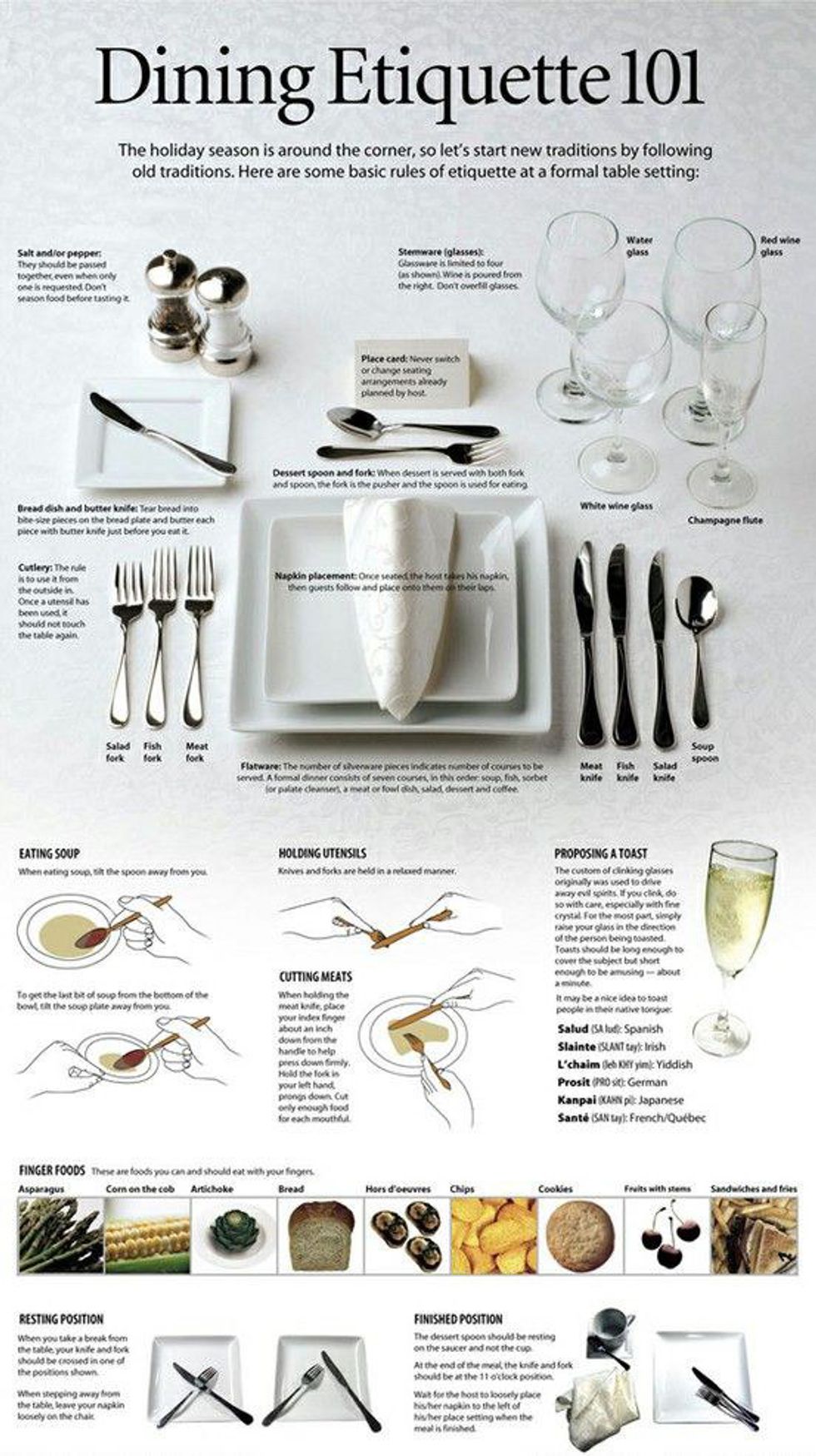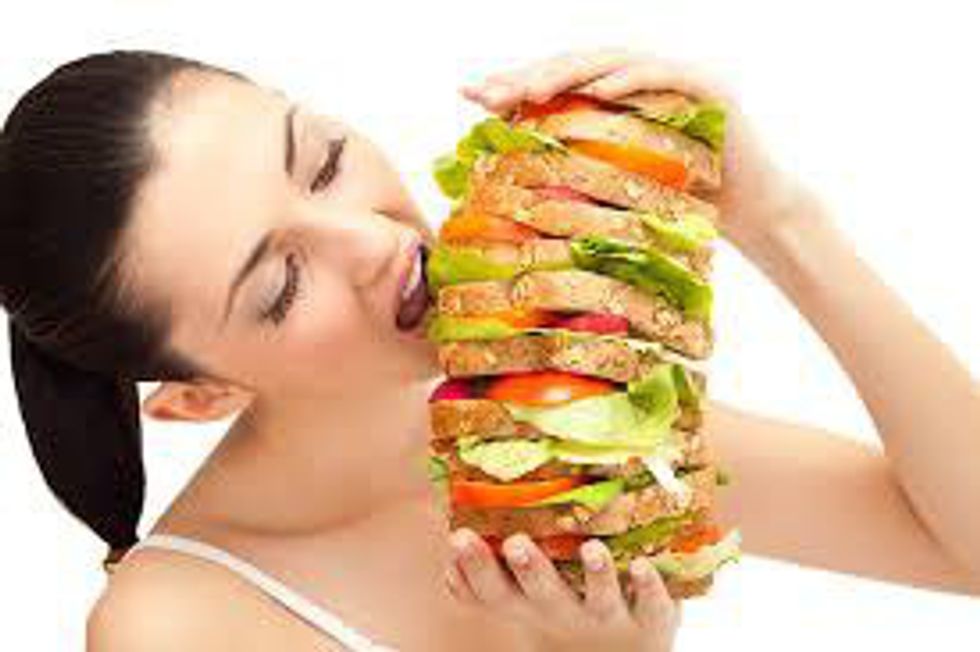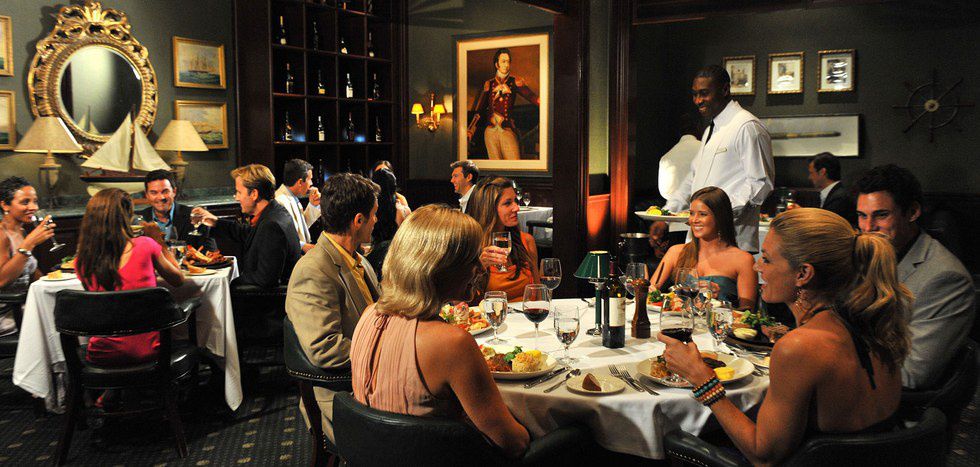Over the past week, I had the fortune to be instructed and re-educated in the proper use of dinner etiquette and table manners. It was one workshop in a series of soft skill workshops tailored to accommodate the development of young leaders. The workshop introduced me to the posh environment of fine dining. I learned the proper setting for tableware, the difference between a salad fork and a dinner fork, acceptable and unacceptable behavior at the table and the role of etiquette in the professional world.
Now, one may ask “What is the point of dinner etiquette and why do I need to follow so many rules just to eat some food?”
I too have wondered— when I first learned —about the exact purpose of dinner etiquette and table manners, especially since I can pretty much eat most things with just a single utensil at a time or with my hands. However, there is an overwhelming difference between “eating” and “fine dining,” which is where one employs the use of dinner etiquette.
The difference is that eating is simply a repetitive act of consumption (chewing and swallowing) with the goal of replenishing the body’s energy reserves; the goal is to eat so proper dining etiquette and table manners are given minimal importance.
In contrast, fine dining places more importance on the active employment of dinner etiquette and table manners; the goal is not to eat, but to display noble behavior which then facilitates the evening conversation. Fine dining is a social event.You shouldn’t expect to eat to your satisfaction. If you’re hungry eat beforehand, otherwise you won’t be able to socialize with your fellow diners; a distasteful act of rudeness.
“Today, business is the largest social environment in the world. Our rapidly expanding global economy forces us to socialize and conduct business at the table more than ever before. It is in this setting that table manners play a major role as relationships are developed and strengthened. There is no better, or possibly worse, place to make an impression.”
-The Little Book of Etiquette
by Dorothea Johnson
The purpose of fine dining is exactly as Dorothea Johnson mentions in her book. Dinner etiquette and table manners are tools to make an impression on a group of professionals, a potential employer, business associates, foreign partners and so forth. Fine dining is a social event in which one must display the effectiveness of his or her conversational prowess, ability to engage in small talk, ability to manage the mood and one's competence when representing their self or their employer.
It wouldn't be farfetched to say that a fine dining event is similar to a formal job interview since every minuscule action is being judged to establish a behavioral profile. Eating is for filling your stomach, while fine dining is for demonstrating your soft skills and your competence as a leader.
I would advise anyone interested in success to learn proper dinner etiquette and table manners as they are necessary behavioral guidelines which may determine the course of your future career. I recommend purchasing a pocketbook on etiquette so you can brush up on those soft skills— I carry such a pocketbook on me at all times.
Remember, there is no such thing as luck in the professional world. What appears to be luck is actually the meeting of preparation and opportunity. It just so happens that opportunity frequently favors the dinner table.









 Energetic dance performance under the spotlight.
Energetic dance performance under the spotlight. Taylor Swift in a purple coat, captivating the crowd on stage.
Taylor Swift in a purple coat, captivating the crowd on stage. Taylor Swift shines on stage in a sparkling outfit and boots.
Taylor Swift shines on stage in a sparkling outfit and boots. Taylor Swift and Phoebe Bridgers sharing a joyful duet on stage.
Taylor Swift and Phoebe Bridgers sharing a joyful duet on stage.













